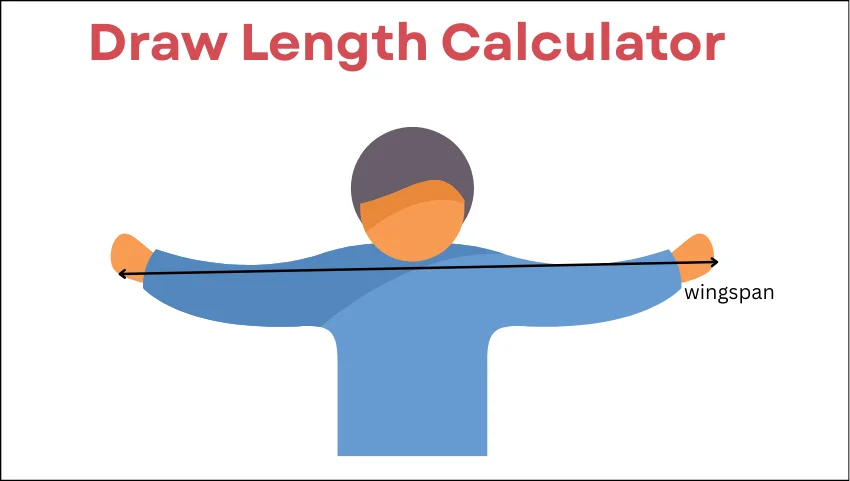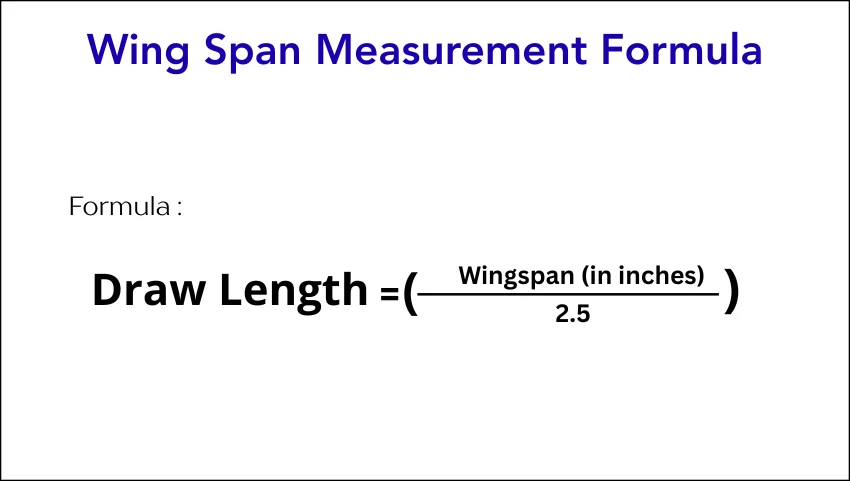🏹 Draw Length Calculator
Your Estimated Draw Length
In archery, having the right equipment setup is crucial for comfort, accuracy, and safety. One of the most important measurements for an archer is the draw length. Knowing your draw length helps you select the right bow size, arrow length, and shooting form. This article will explain what draw length is, why it is important, and how to calculate it easily using a draw length calculator or simple formulas.
What Is Draw Length?
Draw length is the distance an archer pulls the bowstring back to full draw when ready to release an arrow. Specifically, it is measured from the nocking point on the bowstring (where the arrow is attached) to the pivot point of the bow grip (usually where the hand holds the bow). This length determines how far you draw the bowstring and directly influences your bow’s performance.

Draw length varies uniquely for every archer due to differences in arm length, wingspan, and shooting style. It is typically expressed in inches according to the Archery Manufacturers Organization (AMO) standard.
Why is draw length important?
- Comfort: Using the correct draw length means less strain on your arms and shoulders while shooting.
- Accuracy: A proper draw length allows consistent anchor points and better control over aiming.
- Safety: Incorrect draw length can lead to injury or damage to your bow because you might overdraw or underdraw.
- Performance: It affects arrow speed, tuning, and overall shooting mechanics.
How to Measure Your Draw Length
There are several simple and effective ways to measure your draw length, which anyone can do at home, even without a bow.
Method 1: Wing Span Measurement (Most Common)
- Stand naturally with your arms fully extended sideways, parallel to the ground.
- Measure the distance from the tip of your middle finger on one hand to the tip of your middle finger on the other hand. This is your wingspan.
- Use the formula: Draw Length = 2.5/Wingspan (in inches)

For example, if your wingspan is 70 inches: Draw Length=2.570=28 inches
This measurement gives you a close estimate of your ideal draw length for archery.
Method 2: Arm Length Measurement
Another way is to measure from the center of your chest (collarbone area) to the tip of your middle fingers with your arm extended forward (like a clapping position but extended).
This distance often correlates closely to your draw length.
Method 3: Using a Measuring Arrow (Advanced)
If you have access to a bow and arrows:
- Draw the bowstring fully to your anchor point.
- Have someone measure from the nock point (where the arrow attaches) to the pivot point of your bow handle.
- Add 1.75 inches to this measurement to get your AMO draw length standard.
The Draw Length Formula Explained
The easiest and most widely used formula is Draw Length=2.5 Wingspan.
This formula is trusted by many archery professionals and shops because the wingspan reflects your arm reach and natural shooting position. It works well for most archers and should be the starting point for bow and arrow sizing.
Why Use a Draw Length Calculator?
Instead of doing manual measurements and calculations, a draw length calculator is a handy online tool that helps you quickly get your ideal draw length based on your wingspan or height.
Using a calculator minimizes human error and helps beginners get accurate measurements easily.
For example, sources like Omni Calculator provide an online draw length calculator tool to enter your wingspan and get instant results. This quick and simple approach helps you get started with the right bow setup without guesswork.
Adjusting Your Draw Length
Once you know your estimated draw length, you can:
- Choose the right bow size and arrow length.
- Fine-tune your bow’s settings (especially for compound bows).
- Adjust your shooting form for better comfort and accuracy.
Important: Draw length is personal and can vary slightly based on your shooting style, form, and strength. It’s recommended to get professional advice or try out equipment in-store to confirm your draw length.
Effects of Incorrect Draw Length
Using a draw length that is too short or too long can cause problems:
- Too short: You may struggle with inconsistent shooting, slower arrow speed, and instability. You might also overcompensate by raising your shoulders or pushing the bow.
- Too long: You might have difficulty holding the bow at full draw, risk injury (like string slap), and experience erratic pin movement, decreased accuracy, and discomfort.
In both cases, shooting performance and safety are compromised.
What Affects Draw Length?
Draw length depends on:
- Your arm length and wingspan
- Body structure and flexibility
- Your anchor point position (where you hold the string full draw)
- Type of bow used (recurve, compound, longbow)
Knowing these factors helps archers choose equipment that suits their build and shooting habits.
Professional Tips for Measuring Draw Length
- Always measure wingspan in a relaxed and natural stance. Don’t overstretch.
- Repeat measurements several times for accuracy.
- Use a tape measure or yardstick for precision.
- If possible, get help from someone to measure your wingspan or arm length.
- Ask for expert fitting at an archery shop.
Steps to Find Your Draw Length Using Calculator or Formula
- Measure your wingspan (tip to tip middle fingers).
- Divide wingspan by 2.5 to get your approximate draw length in inches.
- Adjust and fine-tune with help from an archery pro if possible.
- Use this draw length to select proper bow and arrows.
Frequently Asked Questions
Q1: What exactly is draw length in archery?
A: Draw length is the distance you pull the bowstring back to full draw, measured from the nocking point on the string to the bow grip pivot point. It determines your reach and affects comfort, accuracy, and bow performance.
Q2: Why is it important to know my draw length?
A: Knowing your draw length helps you select the correct bow size, arrow length, and tuning settings. It prevents discomfort or injury and improves shooting accuracy.
Q3: How do I measure my draw length at home?
A: The simplest method is to measure your wingspan (tip of one middle finger to the other) and divide it by 2.5. This gives a close estimate of your ideal draw length in inches.
Q4: Can I use height to estimate draw length?
A: Height can sometimes help estimate draw length, but wingspan measurement is more accurate because arm length varies among people of the same height.
Q5: What happens if my draw length is too long or too short?
A: If too long, you may experience difficulty holding full draw, erratic aim, and injury risk. If too short, you may have slower arrow speed, inconsistent shots, and discomfort.
Q6: Can I use an online draw length calculator?
A: Yes! Online calculators are quick and easy tools where you input your wingspan or measurements, and they calculate your draw length instantly.
Conclusion
A correct draw length is the foundation for comfortable, accurate, and safe archery. This simple measurement, primarily based on your wingspan divided by 2.5, helps you find the best fit between you and your bow. Whether you’re a beginner or an experienced archer, using a draw length calculator or measuring manually can optimize your equipment and shooting experience.
